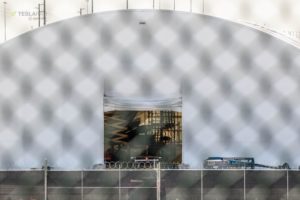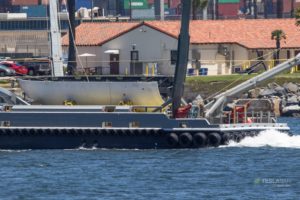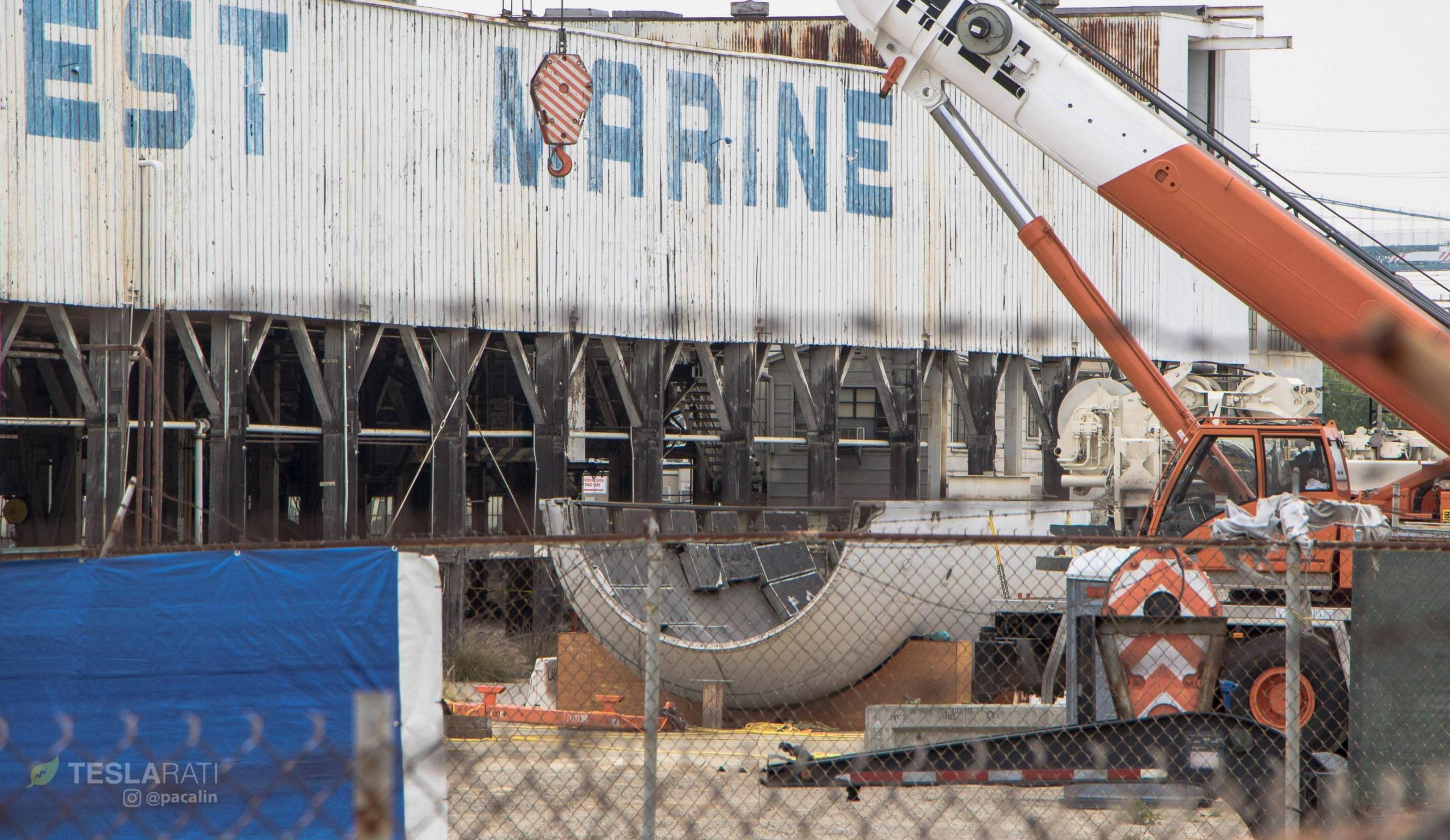
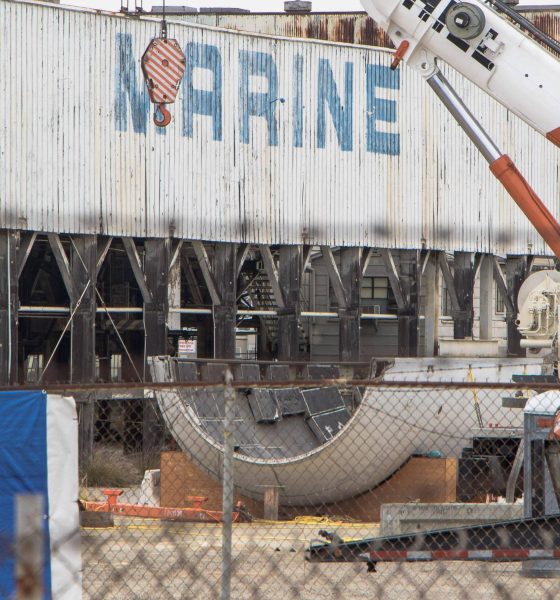
News
SpaceX ramps BFR factory construction as Mr Steven arm surgery continues
Photos taken on July 1st show that land leased by SpaceX to build the first port-located BFR factory and Falcon 9 refurbishment center is continuing to ramp initial construction work, ranging from general clean-up of the long-abandoned berth to serious foundation preparation where SpaceX’s new rocket warehouse will be built.
Previously a shipyard, the Berth 240 facility now leased by SpaceX sat abandoned for the better part of a decade, and features a number of buildings deemed historic landmarks by the city of Los Angeles. As the new tenant, SpaceX is expected to do at least a little refurbishment, with the goal of leaving the site in better shape than they found it in at the end of their 10-year lease. The company does have permission, nonetheless, to demolish one less historic building in order to make space for their planned BFR factory, the construction of which is expected to take 12-18 months for Phase 1 and another 12 or so months for Phase 2, meshing nicely with SpaceX real estate director Bruce McHugh’s estimate of “three to five years” to completion.
On the rocket recovery fleet side of things, SpaceX’s fairing-catcher Mr Steven is still stationed at Berth 240 with all major components of his previous arm assembly now fully removed and stored nearby on the dock. In June 2018, CEO Elon Musk noted on Twitter that the iconic vessel was to have its net grown by a factor of four, meaning that both its length and width would be roughly doubled.

SpaceX’s Berth 240 prospective BFR factory is chock-full of construction equipment. (Pauline Acalin)
Sitting around 400 square meters before arm removal, the new net would be closer to 1500 square meters – roughly 1.5 acres – and could nearly halve the accuracy gap that the company’s engineers need to close in order to reliably catch Falcon payload fairings, cutting 20-30 meters out of the 50 meters most separating the fairing and net at touchdown. Once SpaceX is able to close that gap and start catching fairings before they hit seawater, it should be a fairly simple process to start routinely reusing both halves of the $3 million carbon composite-aluminum honeycomb shells.
Unless they can be rapidly cycled out of the net after landing, recovering both halves may require a second net vessel like Mr Steven, and there could wind up being as many as four Mr Steven copies if the company intends to recovery both fairing halves after every launch from both their California and Florida launch pads. Recent planning on the Florida coast indicates that SpaceX expects their launch cadence to ramp up considerably with the introduction of a fleet of highly-reusable Falcon 9 Block 5 boosters, and the considerable lead-time and sluggishness inherent to manufacturing massive aerospace-grade composite structures with equally vast autoclave ovens means that payload fairings could quite quickly become a bottleneck for SpaceX’s launch business.
- SpaceX’s BFR tent and mandrel, caught on April 14th. (Pauline Acalin)
- Mr Steven out and about with a recovered but unreusable fairing half in May 2018, presumably for some sort of practice. (Pauline Acalin)
While such a bottleneck is far from insurmountable, dramatically expanding Falcon 9 composite component production now would presumably be an inconvenience for SpaceX at a time where they would much rather be focusing internal investments on their next-generation launch vehicle, known as BFR. That rocket is understood to be in the late stages of design and is quickly entering into a more advanced stage of concerted full-scale prototype testing and refinement as SpaceX accumulates invaluable data from hands-on R&D.
Follow us for live updates, peeks behind the scenes, and photos from Teslarati’s East and West Coast photographers.
Teslarati – Instagram – Twitter
Tom Cross – Twitter
Pauline Acalin – Twitter
Eric Ralph – Twitter

News
Another Tesla Model 3 variant sold out for January 2026 in China
A look at Tesla China’s order page shows that new Model 3 LR RWD orders now have an estimated delivery date of February 2026.
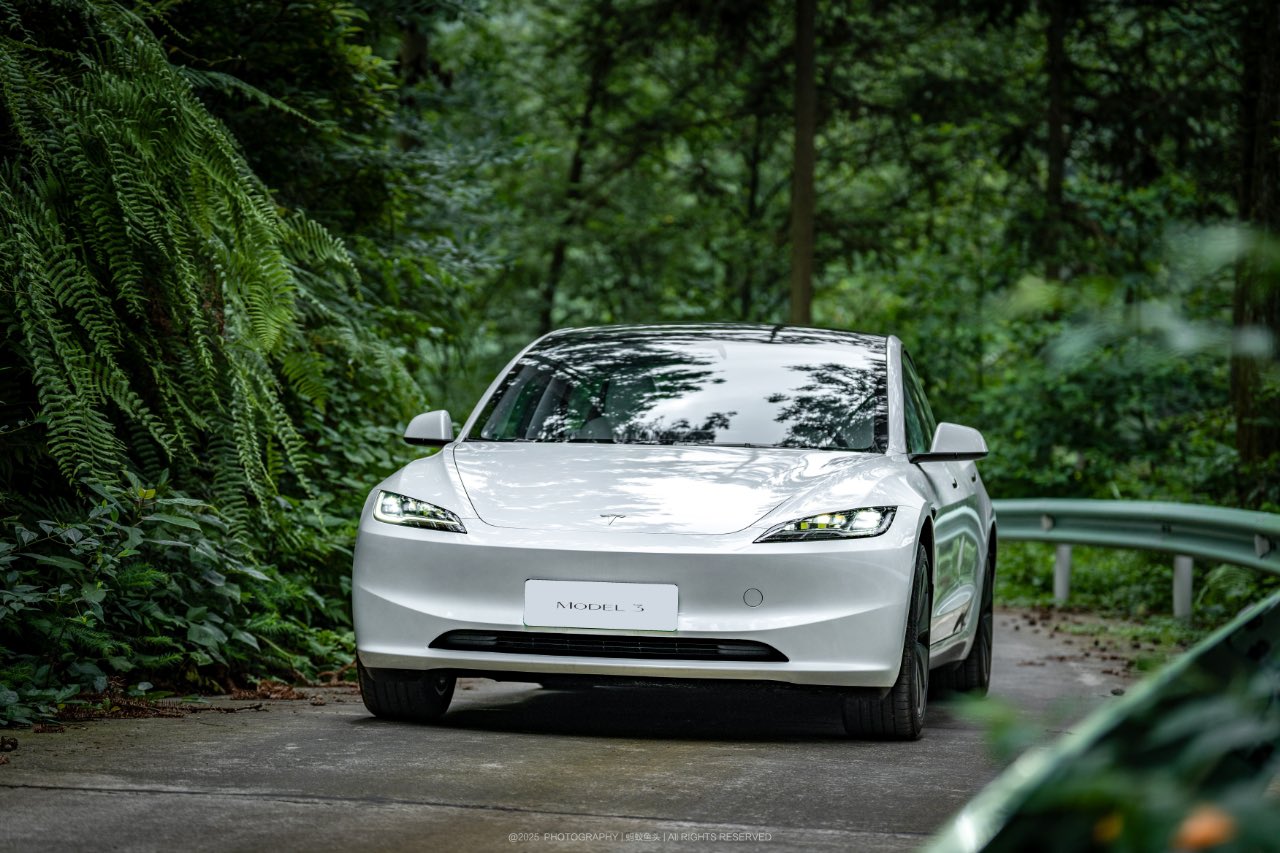
Another Tesla Model 3 variant in China appears to have sold out for January 2026, with the vehicle now showing an estimated delivery date of February 2026 for new orders. This bodes well for the all-electric sedan, which has maintained notable sales despite more affordable rivals like the Xiaomi SU7 and its crossover sibling, the Model Y.
Model 3 LR RWD joins February 2026 queue
A look at Tesla China’s order page for the all-electric sedan shows that new Model 3 Long Range Rear Wheel Drive orders now have an estimated delivery date of February 2026. Priced from RMB 259,500 ($36,810), the LR RWD sits as the second-lowest-priced trim in Tesla China’s four-variant Model 3 lineup. The move follows a similar delivery timeframe for the Model 3 Performance, which remains the most expensive option for the vehicle, as noted in a CNEV Post report.
The estimated delivery dates of the two remaining Model 3 variants remain unchanged for now. The base RWD version, starting at RMB 235,500, and the LR AWD variant, priced from RMB 285,500, both continue to list estimated delivery times of 4-6 weeks. Tesla China, for its part, has continued to list in-stock Model 3 vehicles and is actively encouraging buyers to select inventory units for delivery before the end of the year.
Model Y delays and policy shifts
Delivery timelines for the Model Y in China are also stretching into 2026. All customized Model Y variants now show February 2026 as their estimated delivery date, except for the entry-level version, which still lists January 2026. Tesla has been urging customers since November to prioritize purchasing inventory vehicles, a push aimed at maximizing year-end deliveries.
Timing matters for Chinese buyers due to upcoming changes in government incentives. China’s new energy vehicle purchase tax exemption will be scaled back in 2026, which means customers who take delivery next year could face higher tax costs compared to those who are able to receive vehicles before the end of the year.
As per data from the China Passenger Car Association, Tesla recorded retail sales of 73,145 vehicles in November, down 0.47% year over year. From January through November, Tesla’s retail sales in China totaled 531,855 units, a 7.37% year-over-year drop.
News
Wedbush’s Dan Ives sees ‘monster year’ ahead for Tesla amid AI push
In a post on X, the analyst stated that the electric vehicle maker could hit a $3 trillion market cap by the end of 2026 in a bullish scenario.

Wedbush analyst Dan Ives is doubling down on Tesla’s (NASDAQ:TSLA) long-term upside. In a post on X, the analyst stated that the electric vehicle maker could hit a $3 trillion market cap by the end of 2026 in a bullish scenario, thanks to the company’s efforts to develop and push its artificial intelligence programs.
An aggressive valuation upside
Ives, Wedbush’s global head of tech research, stated in his post that Tesla is entering a pivotal period as its autonomy and robotics ambitions move closer to commercialization. He expects Tesla’s market cap to reach $2 trillion in 2026, representing roughly 33% upside from current levels, with a bull case up to a $3 trillion market cap by year-end.
Overall, Ives noted that 2026 could become a “monster year” for TSLA. “Heading into 2026, this marks a monster year ahead for Tesla/Musk as the autonomous and robotics chapter begins. We believe Tesla hits a $2 trillion market cap in 2026 and in a bull case scenario $3 trillion by end of 2026… as the AI chapter takes hold at TSLA,” the analyst wrote.
Ives also reiterated his “Outperform” rating on TSLA stock, as well as his $600 per share price target.
Unsupervised Full-Self Driving tests
Fueling optimism is Tesla’s recent autonomous vehicle testing in Austin, Texas. Over the weekend, at least two Tesla Model Ys were spotted driving on public roads without a safety monitor or any other occupants. CEO Elon Musk later confirmed the footage of one of the vehicles on X, writing in a post that “testing is underway with no occupant in the car.”
It remains unclear whether the vehicle was supported by chase cars or remote monitoring, and Tesla has not disclosed how many vehicles are involved. That being said, Elon Musk stated a week ago that Tesla would be removing its Safety Monitors from its vehicles “within the next three weeks.” Based on the driverless vehicles’ sightings so far, it appears that Musk’s estimate may be right on the mark, at least for now.
News
Production-ready Tesla Cybercab hits showroom floor in San Jose
Tesla has implemented subtle but significant updates to both the Cybercab’s exterior and interior elements.
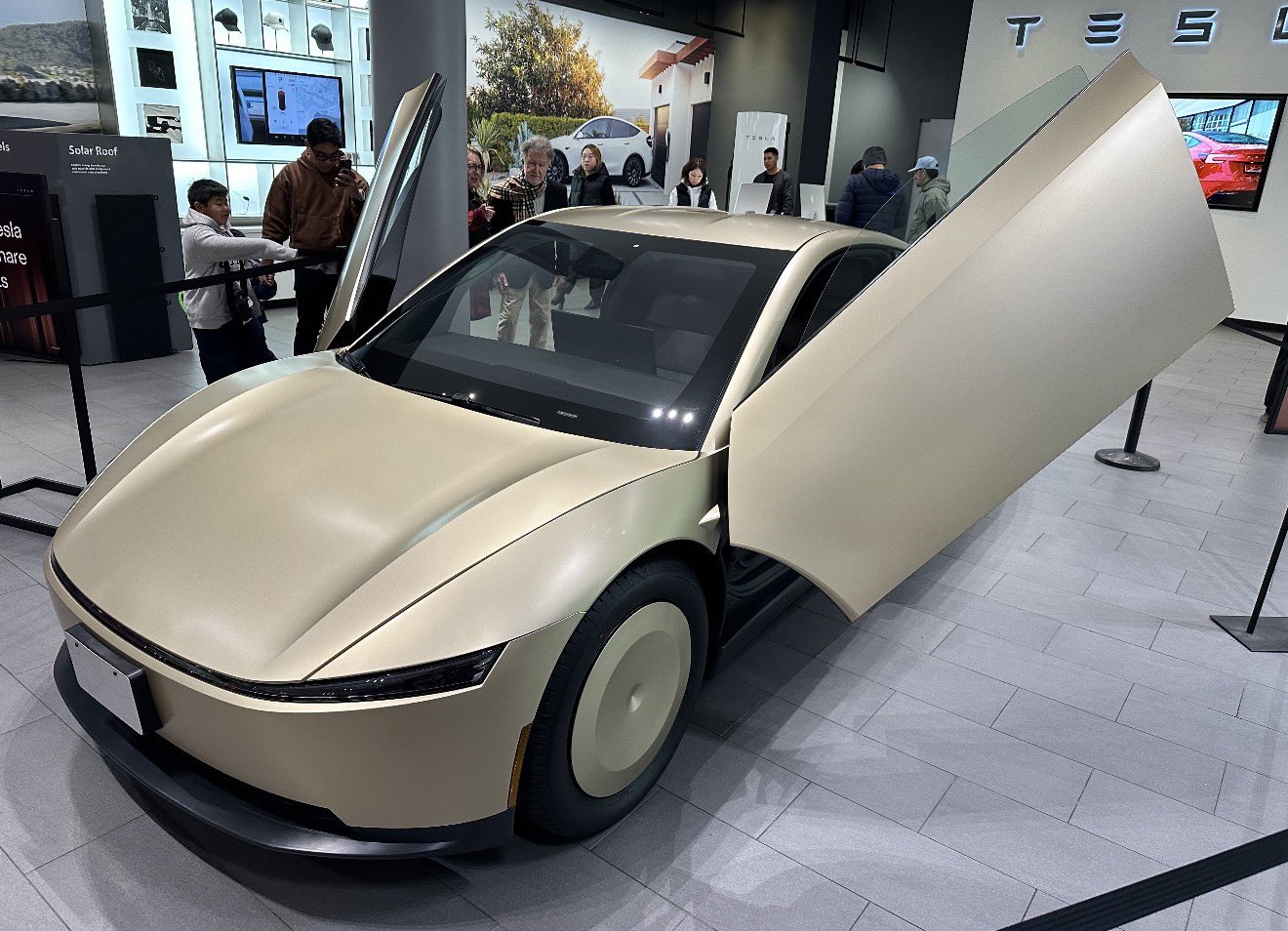
Tesla has showcased what appears to be a near-production-ready Cybercab at its Santana Row showroom in San Jose, California, giving visitors the closest look yet at the autonomous two-seater’s refined design.
Based on photos of the near-production-ready vehicle, the electric vehicle maker has implemented subtle but significant updates to both the Cybercab’s exterior and interior elements, making the vehicle look more polished and seemingly more comfortable than its prototypes from last year.
Exterior and interior refinements
The updated Cybercab, whose photos were initially shared by Tesla advocate Nic Cruz Patane, now features a new frameless window design, an extended bottom splitter on the front bumper, and a slightly updated rear hatch. It also includes a production-spec front lightbar with integrated headlights, new wheel covers, and a license plate bracket.
Notably, the vehicle now has two windshield wipers instead of the prototype’s single unit, along with powered door struts, seemingly for smoother opening of its butterfly doors. Inside, the Cybercab now sports what appears to be a redesigned dash and door panels, updated carpet material, and slightly refined seat cushions with new center cupholders. Its legroom seems to have gotten slightly larger as well.
Cybercab sightings
Sightings of the updated Cybercab have been abundant in recent months. At the end of October, the Tesla AI team teased some of the autonomous two-seater’s updates after it showed a photo of the vehicle being driven through an In-N-Out drive-through by employees in Halloween costumes. The photos of the Cybercab were fun, but they were significant, with longtime Tesla watchers noting that the company has a tradition of driving its prototypes through the fast food chain’s drive-throughs.
Even at the time, Tesla enthusiasts noticed that the Cybercab had received some design changes, such as segmented DRLs and headlamps, actual turn signals, and a splitter that’s a lot sharper. Larger door openings, which now seem to have been teasing the vehicle’s updated cabin, were also observed at the time.

